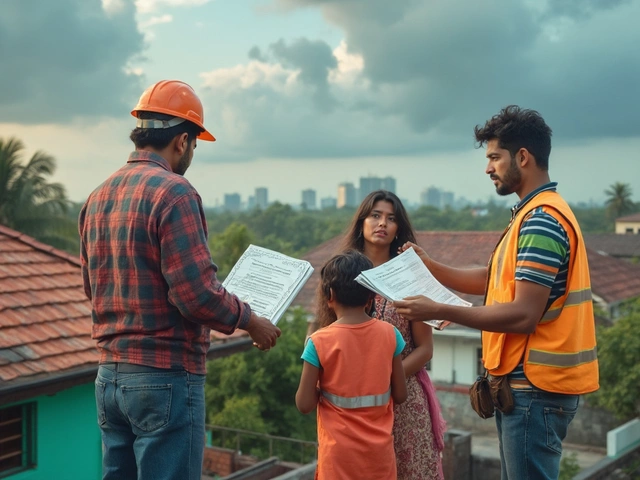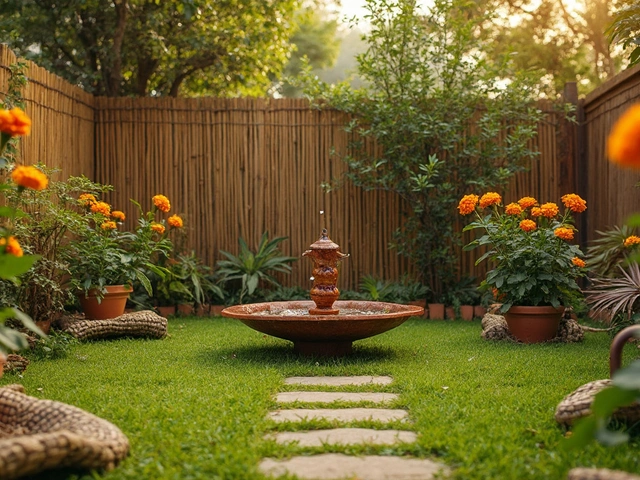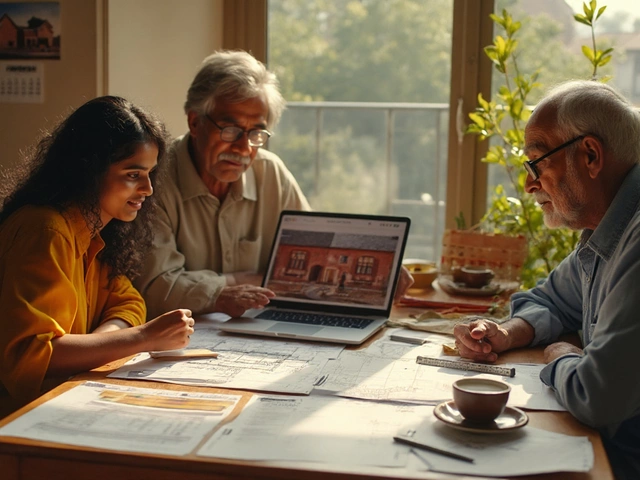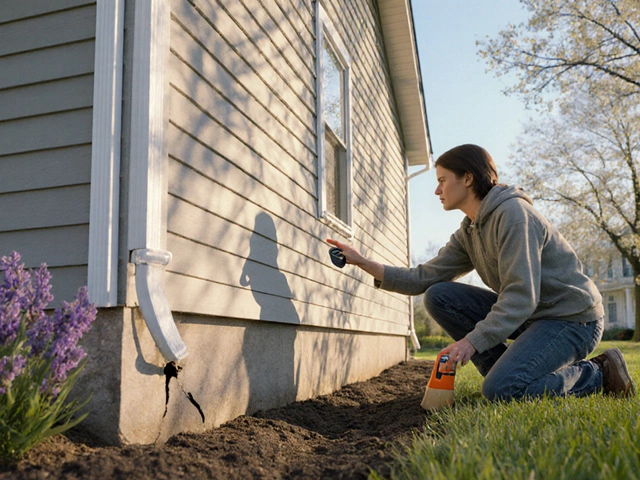If you’re putting serious money into a new home, you want it to hold up no matter what life throws at it—crazy storms, floods, wildfires, or just the daily grind. So what actually makes a house durable? Spoiler: it’s not just about thick walls or fancy paint.
Durability comes down to two key things: materials and smart design. Some building materials, like concrete or steel, just shrug off disasters that would wreck a wood-framed house. And even if you pick tough materials, a good design that keeps water out, shakes off high winds, and stays cool in a fire can make all the difference. People often forget simple things, like roof overhangs to protect walls or raised foundations to handle floods, but those tweaks can save thousands in repairs later.
The tough part? Every climate has different enemies. What works in a fire-prone spot could flop in a hurricane zone. That’s why it’s worth thinking a step ahead before you pick what to build with.
- What Makes a House Truly Durable?
- Concrete, Steel, and ICF: The Big Players
- Brick, Stone, and SIPs: Are They Worth the Hype?
- Weather-Proofing and Disaster-Proofing Tricks
- Maintenance: The Secret to Longevity
- Top Mistakes to Avoid When Building for Durability
What Makes a House Truly Durable?
Let’s get real—most folks picture a solid house as one that just “feels” tough, but true durability is measurable. It all boils down to how your home stands up to water, wind, fire, bugs, earthquakes, and the wear and tear of daily life. Some materials last way longer, but the way they’re put to use matters just as much.
Look at the numbers in this handy table to see average lifespan of common house types:
| House Type | Typical Lifespan (years) | Common Weaknesses |
|---|---|---|
| Wood Frame | 50-100 | Fire, termites, rot |
| Concrete Block | 100-200 | Cracks, moisture seepage |
| Steel Frame | 100+ | Rust (if not treated), cost |
| Brick & Stone | 100-500+ | Mortar failure, earthquakes |
| ICF (Insulated Concrete Form) | 100-200 | Upfront expense |
If you want a durable house, you need to think about more than just walls. Here are the main things to focus on:
- Materials that don't quit: Concrete and steel hardly ever rot, burn, or get eaten by bugs. Brick and stone can last centuries if built right.
- Moisture control: Most big repairs start with water damage. Good drainage, waterproof membranes, and sloped roofs keep water out.
- Wind and impact resistance: Reinforced walls, impact-rated windows, and strong roofs help homes survive storms and flying debris.
- Fire resistance: In wildfire zones, non-combustible roofs and siding, plus sealed vents, make a huge difference.
- Pest resistance: Termites and rodents can wreck homes faster than you’d think. Concrete, steel, and masonry are hard to chew into.
- Good design: It’s no good having tough walls if the roof leaks or the foundation shifts. Overhangs, raised slabs, and simple shapes add years to a home’s life.
Here’s a wild fact: houses built to Miami-Dade hurricane code saw 60% fewer insurance claims than older ones during Hurricane Irma in 2017. Codes exist for a reason—and durable homes usually smash the minimum requirements.
Concrete, Steel, and ICF: The Big Players
When you start looking for the most durable house to build, concrete, steel, and Insulated Concrete Forms (ICF) always end up on top. There’s a reason high-rise buildings, bunkers, and storm shelters don’t use standard wood frames—they need materials that shrug off trouble.
Let’s talk concrete first. Poured concrete walls can last over a hundred years and hold up against fire, flooding, mold, and even termites. Builders use it for basements because it just doesn’t rot or burn. After Hurricane Michael hit Florida in 2018, most wood houses got flattened, but homes with poured concrete walls were mostly untouched. Concrete really shines in hurricane zones or anywhere flooding is a risk.
Steel frames are huge in commercial builds but are catching on in homes for a reason. Unlike wood, steel won’t warp or soak up water. In places where termites are nightmare fuel, steel is the clear winner. It’s also flexible under stress, so in an earthquake, a steel frame bends instead of snapping. One catch: steel is a good heat conductor, so you need extra insulation if you want to save on energy bills.
ICF (Insulated Concrete Forms) is a hybrid approach, combining the strength of concrete with built-in insulation. ICF walls use foam blocks filled with concrete, ticking the boxes for disaster-resistance and energy savings. These houses stay quieter, warmer in winter, and cooler in summer with less effort. Even in wildfires, ICF homes perform well because concrete doesn’t burn and the foam doesn’t easily catch fire.
Here’s a quick rundown of why these three options are dominating new builds focused on durability:
- Concrete: Unbeatable lifespan, fire and flood proof, but heavy and needs skilled work.
- Steel: Termite-proof, flexible under stress, fast to build, but insulation costs more.
- ICF: Combines concrete strength with insulation, good for soundproofing and energy efficiency, usually requires specialized builders.
Bottom line? Whether you’re facing crazy weather, pests, or just want fewer repairs in the future, these materials put your home on a whole new level compared to traditional wood framing.
Brick, Stone, and SIPs: Are They Worth the Hype?
Let’s cut through the noise: tons of folks think brick and stone make for the most durable house. That belief isn't just old-school thinking. Brick and stone are super tough when it comes to resisting weather, fire, and pests. A well-built brick home can last over 100 years—just look at all those older neighborhoods where brick homes are still standing firm. Stone goes even further, with some stone houses outlasting everything else for centuries. The biggest downside? Cost. Good stonework and bricklaying don't come cheap.
Now, enter SIPs (Structural Insulated Panels). If you haven’t heard of them, they’re basically giant Oreo cookies for homes: two sturdy boards (like OSB or plywood) sandwiching a thick layer of insulating foam. SIPs have gotten attention because they go up much faster than brick or stone, and they act like a big thermos—locking heat in or out depending on the season. Some studies show SIP homes use up to 50% less energy than regular stick-built homes. That’s serious savings month after month.
But are they as tough? SIPs hold up great against wind and can resist fire pretty well, but if water sneaks in, the panels can rot or get moldy over time. Repairs can also be a headache since finding hidden damage inside a wall panel isn’t easy. Stone and brick, meanwhile, don’t have these problems and need very little upkeep—just check the mortar every few years.
Here’s a look at how these materials stack up:
| Material | Average Lifespan (years) | Fire Resistance | Energy Efficiency | Maintenance Needs |
|---|---|---|---|---|
| Brick | 100+ | High | Medium | Low |
| Stone | 150+ | Very High | Medium | Very Low |
| SIPs | 50+ | Medium-High | High | Low-Medium (if dry) |
Some builders mix materials for the best of both worlds—for example, stone or brick on the outside for protection, SIPs on the inside for comfort. But watch out for higher costs and more planning.
If you’re hung up on durability alone and don’t mind shelling out more upfront, brick and stone are hard to beat. If energy bills make your head spin and you want fast construction, SIPs have a real edge. Think about your climate, your budget, and how much hassle you’re willing to handle down the line.
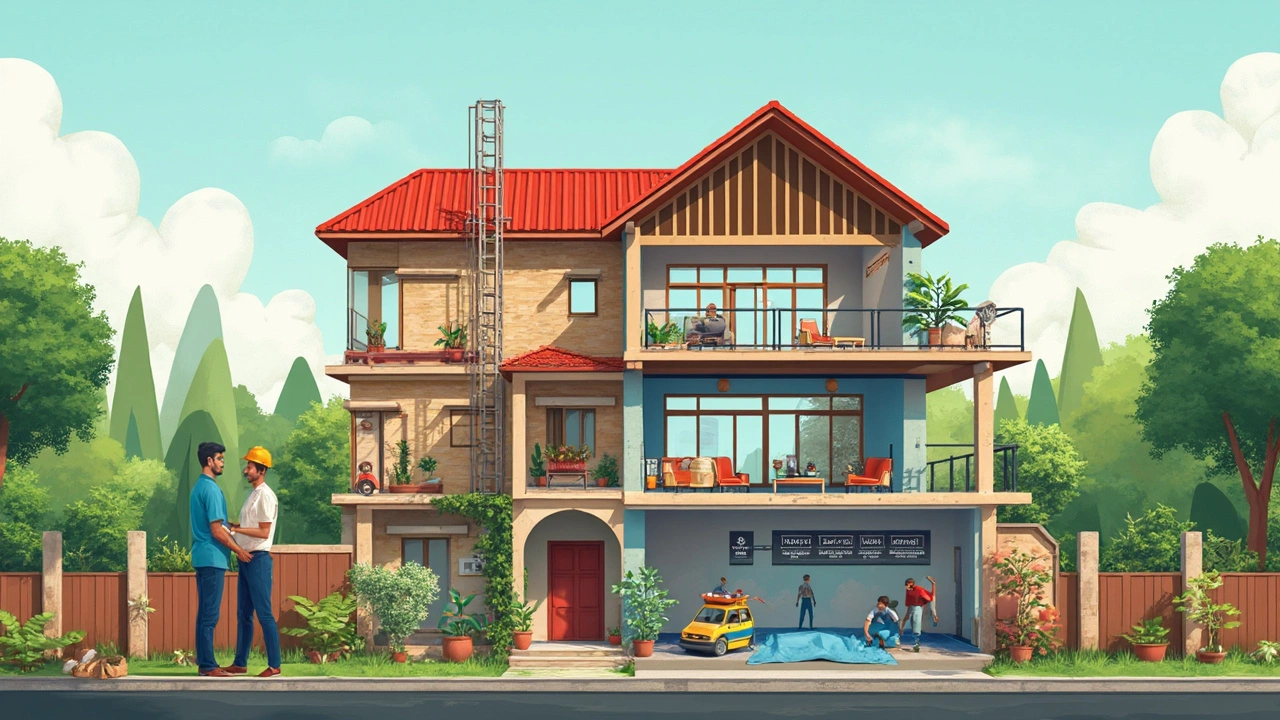
Weather-Proofing and Disaster-Proofing Tricks
Here’s where you separate a regular house from a fortress. The best new builds don’t just look tough—they’re loaded with features that help them survive nasty weather and disasters, and some of these tricks are easier (and cheaper) to add than you might think.
First up: roofs. Ever notice how hurricane-prone places in Florida love hip roofs or low-pitched metal ones? There’s a reason. Meteorologists found hip roofs hold up way better against high wind than gable roofs, and metal roofing can take a pounding from hail and fire without giving in. Simple roof straps or hurricane ties add way more strength—FEMA says these can drop serious roof-failures in storms. And if wildfire is a concern, skip the wooden shakes—go for metal or tile. They just don’t burn.
Flooding? Raise that house. Even a foot can knock your flood-risk way down. Smart builders also put electrical and HVAC stuff above potential flood levels. Sealing foundations and using waterproof membranes gives you another layer between the outside mess and your living room.
Windows and doors take a beating in storms. Impact-rated windows (think laminated glass or roll-down shutters) make a massive difference in hurricane country. Reinforced doors with multi-point locks don’t fly open when the wind wants in. And forget flammable siding—concrete fiberboard or brick cladding won’t help a wildfire.
If you want the hard facts, here’s how some common materials stack up in different disasters:
| Material | Fire Resistance | Storm Resistance | Flood Resistance |
|---|---|---|---|
| Concrete | Excellent | Excellent | Good |
| Steel | Excellent | Good | Fair |
| Brick | Good | Good | Fair |
| Wood | Poor | Poor | Poor |
| ICF (Insulated Concrete Forms) | Excellent | Excellent | Good |
Want to up your durable house game? Don’t forget these bits:
- Add gutters and drainage away from the house. Water sitting near your foundation equals expensive problems.
- Install sump pumps if your lot is prone to groundwater or basement flooding.
- Check local disaster risks. What works in California (quake straps, fireproofing) won’t cut it in tornado alley (safe rooms, wind-rated windows).
Pro tip: Take cues from disaster-prone regions—those building codes are strict for a reason. Even if your local rules are lax, a little extra disaster-proofing now will almost always pay off when things get rough.
Maintenance: The Secret to Longevity
Even the strongest house won’t last if you skip regular upkeep. Think of maintenance as the silent hero in the background, making sure that all the hard work and money you put in doesn’t go straight down the drain. You could use the most durable house materials and best design, but if you don’t look after things like your roof, gutters, or siding, problems will sneak in.
Roof leaks and clogged gutters are some of the top reasons houses start to fall apart early. Regularly clearing out gutters, checking for cracked roof tiles, and spraying for pests can literally add decades to a home’s life. Missing just one yearly inspection can snowball into major water damage or even foundation cracks. Small stuff—like dirty furnace filters or loose siding—might seem harmless, but they can turn into wallet-burning repairs if you let them slide.
- Durable house materials like concrete and brick need less work than wood, but nothing is totally maintenance-free.
- Concrete walls still need a yearly check for cracks or moisture seepage, especially in rainy places.
- Brick can last over 100 years, but make sure the mortar doesn’t start crumbling. Tuckpointing (replacing old mortar) can prevent expensive fixes later.
- Steel homes need paint touch-ups every few years to dodge rust, especially near the coast.
Here’s a snapshot on how much maintenance each popular building material usually takes each year:
| Material | Typical Yearly Tasks | Estimated Annual Cost (USD) |
|---|---|---|
| Concrete | Crack check, sealant update | $200 - $500 |
| Brick | Mortar check, clean, seal | $300 - $700 |
| Steel | Check for rust, repaint touch-up | $250 - $800 |
| Wood | Pest check, painting, caulking | $400 - $1200 |
Skipping maintenance isn’t just a gamble with your comfort—it can wreck your resale value. A 2023 survey showed homes with obvious signs of neglect got offers up to 20% lower than similar well-kept properties. So, if you want to build a house that lasts and keeps its value, regular maintenance is non-negotiable. Schedule those checks like you would a dentist visit—just do it, and future you will be glad you did.
Top Mistakes to Avoid When Building for Durability
Even if you’re using the most durable house materials around, cutting corners in other areas can leave your home vulnerable. Here’s what trips up most people when they want a house that lasts.
- Skipping the Right Foundation: It’s shocking how many new builds use a cookie-cutter slab, even in flood or unstable soil zones. If the base isn’t set up for local risks, all that strong material above won’t matter. For example, in places with a high water table, not using piers or a raised foundation can mean thousands lost to water damage later.
- Ignoring Local Weather Risks: A house that can handle hurricanes in Florida might freeze out homeowners in Minnesota. Some folks use wood siding in wildfire areas or cheap roof shingles in hail-prone zones, which is just asking for trouble. Always match your materials and design to what Mother Nature throws at you locally.
- Overlooking Proper Sealing and Drainage: Water is a house’s worst enemy. If you miss on waterproofing decks, windows, or foundations, you set up a rot or mold nightmare. Poor drainage is a big reason homes fail earlier than expected, even when they’re built strong.
- Cheap Hardware and Connectors: Builders may splurge on concrete and steel but save pennies on nails, screws, or hurricane straps. In a study by the Insurance Institute for Business & Home Safety, homes with reinforced connections and proper ties had up to 60% fewer storm-related insurance claims.
- Going Without a Long-Term Maintenance Plan: No material is truly zero-maintenance. Fancy concrete walls still need checking for cracks, and metal roofs need the occasional lookover for rust or fastener issues. Skipping regular check-ups is a shortcut to repairs or even full rebuilds down the line.
To give you a quick sense of where things often go wrong, here’s a table with some real-world builder mistakes and their consequences:
| Mistake | Common Result | Fix Cost (USD) |
|---|---|---|
| Poor drainage around house | Basement floods, foundation cracks | $8,000 – $30,000 |
| No hurricane straps or ties | Roof loss in storms | $15,000 – $40,000 |
| Wrong materials for climate | Warping, mold, extreme repairs | $5,000 – $25,000 |
| Improper waterproofing | Rot, mold, structural damage | $4,000 – $20,000 |
A strong home isn’t just about picking the right walls. Every little decision, from the base up to the roof nails, adds up. If you care about durability, sweating these details pays off in less stress—and way fewer repair bills—down the line.


